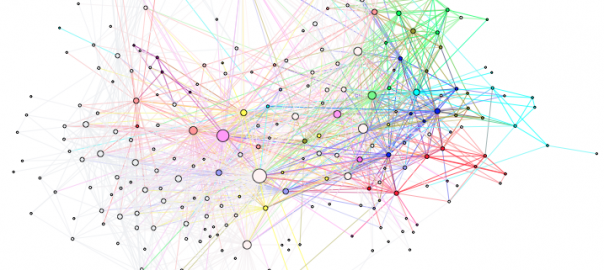Network analysis, and especially social network analysis, has always been a popular method in communication sciences, although recently it has become even more popular. Nowadays, the idea of social networks is so widespread that almost everyone has some notion of what a social network is. For example, one of the most well-known ideas about social networks is that every two people are, on average, six steps away from each other. This six degrees of separation thesis was famously tested empirically by sociologist Stanley Milgram in the late sixties. In the age of Facebook, the virtual length between every two Facebook users has shrunk to 4.7 steps. This illustrates the “small-world structure” of social networks, meaning that social networks comprise highly connected clusters of nodes (people), which have several “weak ties” between them holding the whole network together and making it possible to reach almost anyone quickly.
A network is comprised of nodes (e.g. people) and edges (e.g. social connections). When planning to conduct a network analysis the researcher will need to consider what the units of analysis are, i.e. who are the actors. They can be people in a small workplace or in a community, but they can also be nation states or power plants. One also needs to consider the sample: what is the population of actors that comprises the network? The other crucial thing to consider is to determine the form of the tie between the two units of analysis: what makes the relation? Usually the connection takes the form of some type interaction between the actors, which can be directional or mutual.
For beginners, many great examples and easy instructions for conducting a social network analysis with Facebook or Twitter data can be found at this blog, for example. Network analysis of one’s own Facebook friends provides both fun and excitement and is a good step towards conducting serious research using network analysis. For these purposes this blog provides a lot of good resources to begin with.
For those who want to try out visualizing a Twitter network by using a network analysis software Gephi and NodeXL, follow this presentation:
